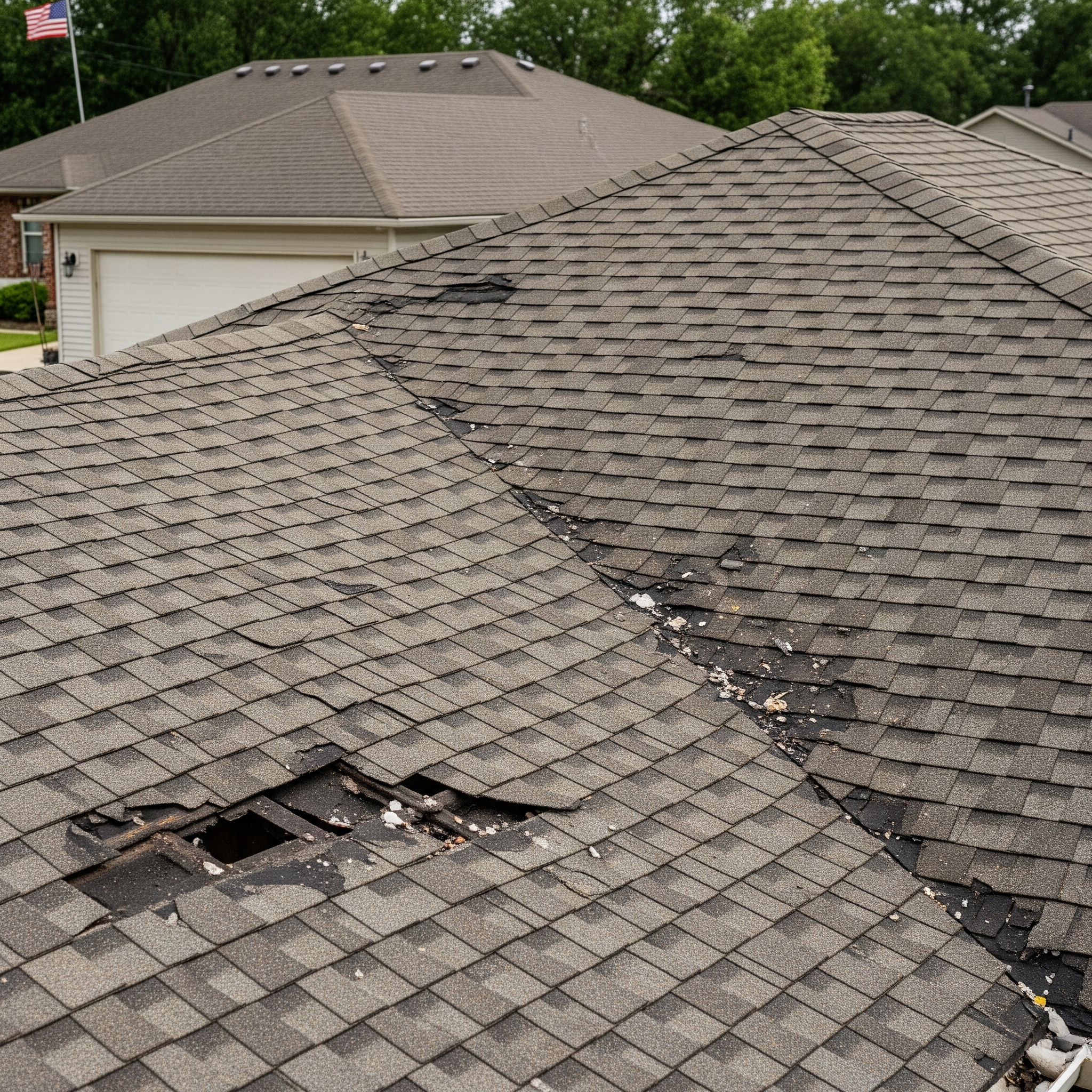1. Why Weather Is One of the Top Threats to Your Roof
Your roof is exposed to the full force of New Jersey’s weather year-round. Whether it’s blistering sun, torrential rain, powerful storms, heavy snow, or fluctuating temperatures—it all affects your roofing system in serious ways. Understanding how weather damages your roof empowers you to act proactively, prevent costly repairs, and keep your home safe and dry.
2. Common Weather Conditions in New Jersey
New Jersey’s climate features rapidly changing weather periods:
-
Hot, humid summers with strong sun and occasional thunderstorms
-
Windy spring and fall storms, including hail, wind gusts, and heavy rains
-
Cold, snowy winters, with freeze-thaw cycles and ice dams
-
Transitional seasons marked by extreme weather swings
Every season brings its own challenges—and cumulative effects can shorten your roof’s lifespan significantly.
3. Seasonal Weather Effects on Roofing
Summer – UV Radiation & Heat Damage
High summer temperatures and persistent UV exposure can cause:
-
Asphalt shingle brittleness and cracking
-
Curling or warped shingles
-
Reduced granule adhesion, exposing protective layers
-
Faster aging of roof materials
Asphalt adhesives may fail in extreme heat, leading to unsealed shingles that lift or blow off in wind storms.
Fall – Debris & Organic Buildup
Autumn’s falling leaves and pine needles can accumulate on your roof and in gutters, leading to:
-
Blocked gutters and water overflow
-
Ponding water that deteriorates roofing materials
-
Moistened debris promoting moss, algae, or mold growth
-
Moisture infiltration that accelerates shingle wear
Winter – Snow, Ice Dams & Freeze-Thaw Damage
Cold weather leads to multiple hazards:
-
Heavy snow load stressing roof structure
-
Ice dams forming along eaves, forcing water under shingles
-
Freeze–thaw cycles causing cracking and flashing separation
-
Persistent roof moisture causing rot or mold
Even minor leaks can go undetected until spring when thawing reveals interior damage.
Spring – Wind, Rain & Hail
Spring storms often bring:
-
Gusts that loosen or lift shingles
-
Hailstones that crack or puncture roofing
-
Heavy rains that worsen existing leaks
-
Asphalt shingle granule wash-off from storm runoff
Without proper inspection and maintenance, spring storms can exacerbate aging roof conditions.
4. Key Signs of Weather-Related Roof Damage
Watch for these warning signs, especially after severe weather events:
-
Missing, lifted, cracked, or blistered shingles
-
Granule buildup in gutters or downspouts
-
Curling or cupping at shingle edges
-
Rusted, cracked, or loose flashing around chimneys and vents
-
Black streaks, moss, or green algae patches
-
Water stains or mold on ceilings and walls
-
Sagging rooflines or compromised decking
-
Ice dams or dripping icicles along the eaves
If you spot any of these after storms or seasonal changes, it’s time to schedule a roof inspection.
5. How to Inspect Your Roof Safely After a Storm
Use these steps to check for weather damage:
-
Exterior Walk-By: Look for shingle debris and visible sagging or discoloration.
-
Gutter Inspection: Check for granules, debris, and clogged areas.
-
Soffit and Fascia Check: Look for water stains, rot, or mold.
-
Attic Inspection: With a flashlight, scan for daylight through boards, moisture, mold, or insulation damage.
-
Document Everything: Photograph damage with date stamps for insurance and repair planning.
Safety Note: Avoid climbing on your roof after storms or without proper equipment. Leave this to trained professionals.
6. Preventive Maintenance Tips to Protect Your Roof
Keeping your roof weather‑ready doesn’t require constant repair. Follow these maintenance tips:
-
Clean gutters and downspouts at least twice yearly
-
Trim branches overhanging the roof to reduce debris and mechanical damage
-
Schedule professional inspections in spring and fall
-
Inspect and replace damaged flashing promptly
-
Remove moss and algae using safe products or professional cleaning
-
Maintain attic insulation and ventilation to prevent ice dams and heat buildup
Proactive care adds years to your roof’s lifespan and can avoid costly storm repair.
7. When to Call a Professional Roofer
You should contact American Roofing Pros New Jersey when:
-
You suspect storm damage or see missing shingles
-
You find granule buildup, curling shingles, or leaks
-
Ice dams have formed and caused interior water stains
-
You’re unsure whether a repair or full replacement is needed
We offer free roofing inspections, photos and reporting, insurance claim support, and quality repairs or replacements. Call (877) 228‑1042 or request your free quote.
8. Why Choose American Roofing Pros New Jersey
Here’s why New Jersey homeowners trust us to protect their roof against weather damage:
-
Licensed, insured, and locally based experts
-
Fast response after storms and weather events
-
Thorough, honest inspections with photo documentation
-
Support with insurance claims and adjuster assessments
-
Comprehensive services—from inspections to full replacements
-
High-quality materials with workmanship warranties
Since weather damage can worsen over time, early expert intervention often saves thousands.
Final Thoughts: Weather-Proof Your Roof, Zero Compromise
New Jersey’s weather can be unpredictable—and your roof bears the burden. But with proper maintenance, seasonal inspections, and swift professional response, you can ensure your roofing system stays strong against seasonal threats.
If you live in New Jersey and want to protect your home from weather‑related damage—or just haven’t had an inspection in a while—contact American Roofing Pros New Jersey today.
📞 Call (877) 228‑1042
🔗 Get your free roof inspection or quote
